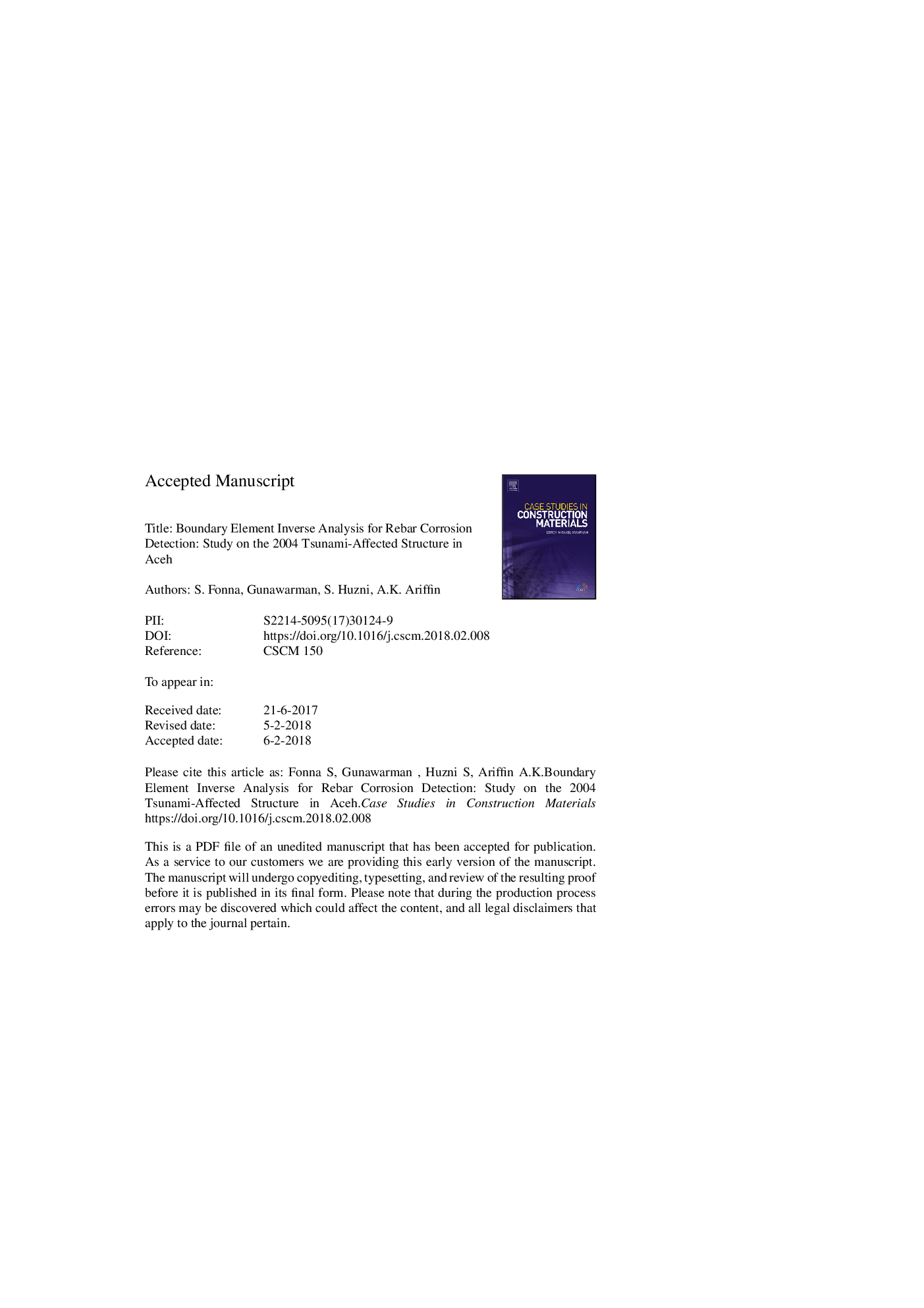| Article ID | Journal | Published Year | Pages | File Type |
|---|---|---|---|---|
| 6701871 | Case Studies in Construction Materials | 2018 | 9 Pages |
Abstract
Evaluation of rebar/reinforcing-steel corrosion for the 2004 tsunami-affected reinforced concrete (RC) buildings in Aceh was conducted using half-cell potential mapping technique. However, the results only show qualitative meaning as corrosion risk rather than the corrosion itself, such as the size and location of corrosion. In this study, boundary element inverse analysis was proposed to be performed to detect rebar corrosion of the 2004 tsunami-affected structure in Aceh, using several electrical potential measurement data on the concrete surface. One RC structure in Peukan Bada, an area heavily damaged by the tsunami, was selected for the study. In 2004 the structure was submerged more than 5â¯m by the tsunami. Boundary element inverse analysis was developed by combining the boundary element method (BEM) and particle swarm optimization (PSO). The corrosion was detected by evaluating measured and calculated electrical potential data. The measured and calculated electrical potential on the concrete surface was obtained by using a half-cell potential meter and by performing BEM, respectively. The solution candidates were evaluated by employing PSO. Simulation results show that boundary element inverse analysis successfully detected the size and location of corrosion for the case study. Compared with the actual corrosion, the error of simulation result was less than 5%. Hence, it shows that boundary element inverse analysis is very promising for further development to detect rebar corrosion.
Related Topics
Physical Sciences and Engineering
Engineering
Civil and Structural Engineering
Authors
S. Fonna, Gunawarman Gunawarman, S. Huzni, A.K. Ariffin,
